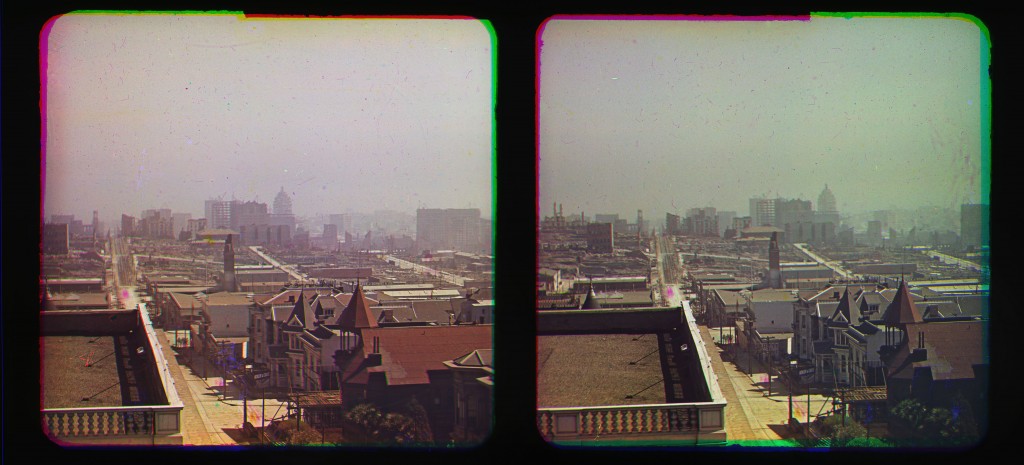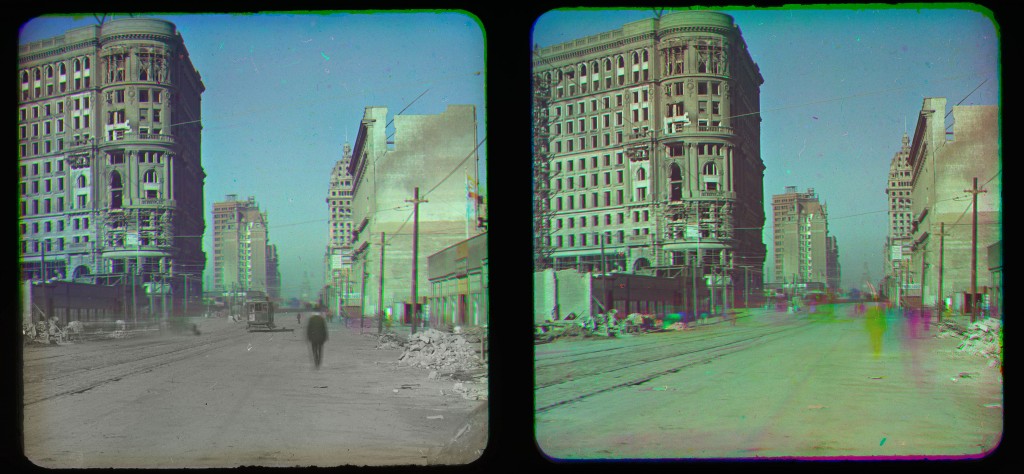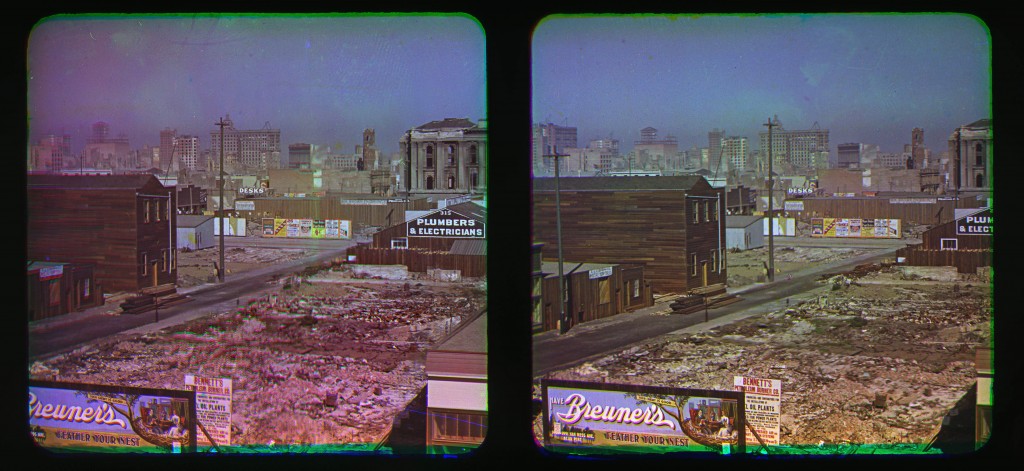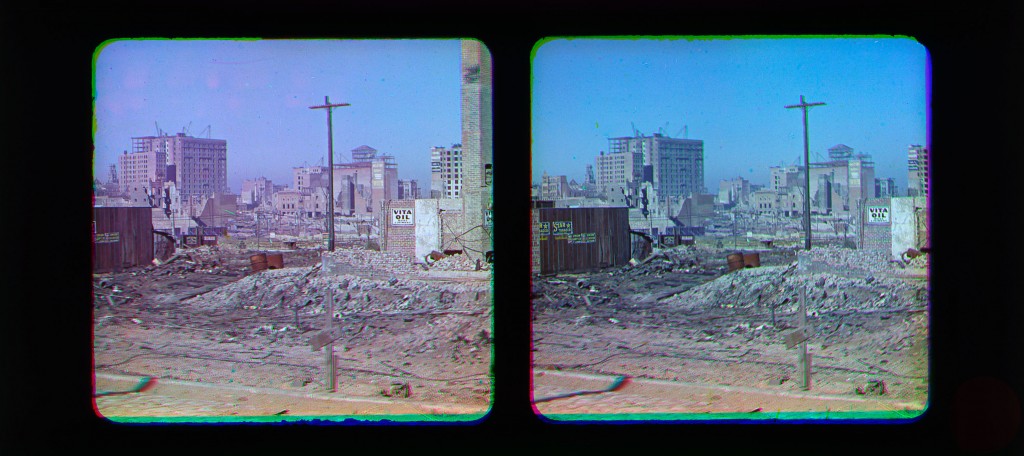The Smithsonian has discovered color pictures of San Francisco in the aftermath of the 1906 earthquake taken by photographic innovator Frederick Eugene Ives. They are the earliest color pictures of San Francisco ever, and the only true color ones of the earthquake-devastated city (some hand-tinted pictures exist, but they were taken in black and white and then color was applied after they were printed).
Ives took many of the pictures from the roof of the Hotel Majestic on Sutter Street, where he stayed in October of 1906, six months after the April earthquake. Experts think at least some of the pictures might have been taken over an earlier trip because the city is still laid to waste. There are scorched ruins, piles of rubble, whole blocks flattened like pancakes, a skyline full of rickety-looking swiss cheese buildings.
Frederick Ives took the pictures using a stereoscopic process of his invention called the Krömgram. The process used mirrors and filters to make separate slides for each primary color in the spectrum. Then the slides were bound together in a specific order, and that package would be seen through a Krömgram viewing device.
Taking the pictures required operating a cumbersome machine and very, very long exposures. The roof of the hotel and the almost empty streets provided him with the city equivalent of a still life, so he was able to take this color pair of pictures which customers would then view in 3D by looking at them through the viewing device. Although it doubtless must have been an arresting visual experience, the Krömgram was doomed by its complexity and huge expense (a viewing device cost $50 back then, $1000 in today’s money).
The pictures were found by Anthony Brooks, a volunteer at the Smithsonian’s National Museum of American History, who was going through a collection of glass plate pictures that Ives’ son Herbert had donated to the Smithsonian. Brooks has a personal interest in early color photography, so he recognized that these pictures were something special.
National Museum of American History restorers were able to piece together the delicate glass plates so we can see the pictures as they would have looked through the Krömgram.



